







| Canada Goose (Branta canadensis (Linnaeus, 1758)) |








|
|
Scientific name: Branta canadensis (Linnaeus, 1758) Common name: Canada Goose French name: Bernache du Canada Order: Anseriformes Family: Anatidae Size: Body size : 90 to 100 cm; Wingspan : 160 to 175 cm; Weight : 4300 to 5000 g Habitat: Grassy locations near water. You can also find it in parks and gardens. Food: Grasses and aquatic plants. Nesting: Females build a nest on the ground among high grasses or reed beds. The nest is made up of grasses and twigs. It is lined with feathers and down. There is only one brood of 4 to 8 eggs per year. Migration: Northern birds migrate southwards in winter flying in V-shaped formation. Geographic area: North America. Introduced to Europe and New Zeeland. |
The Canada Goose has a mostly brown plumage with pale borders. The neck and the head are black. The cheeks and the breast are white. The underside is a pale colour. Females are similar to males but slightly smaller. The Canada Goose is a noisy bird, especially while flying. Canada Gooses are used to living in family groups. |
| [To know more about the Canada Goose] [Next picture] [Top] |
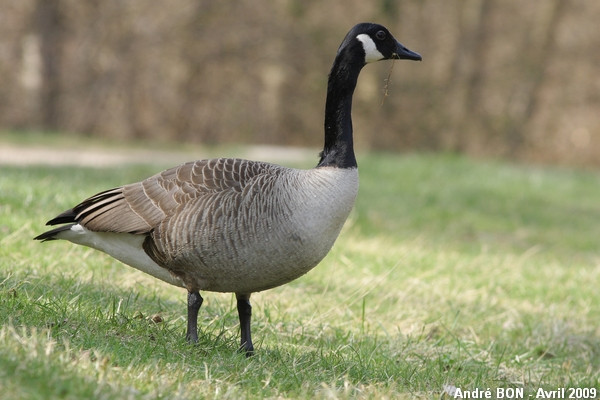
|
Canadian Gooses are the largest birds that I observe in this region. |
| [To know more about the Canada Goose] [Next picture] [Previous picture] [Top] |
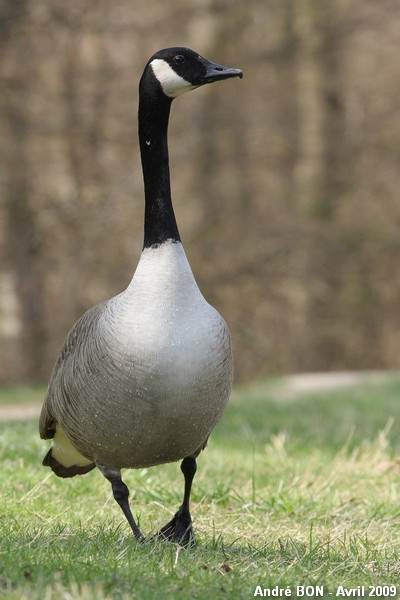
|
As the Canadian Gooses are not hunted, they are very easy to approach. |
| [To know more about the Canada Goose] [Next picture] [Previous picture] [Top] |
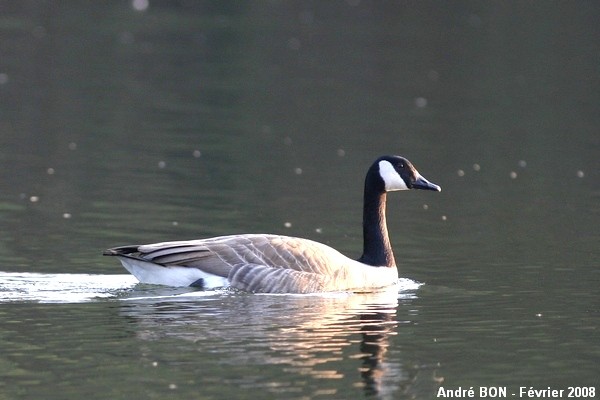
|
The Canada Goose which are usually located on the large pond of Saint-Quentin-en-Yvelines are dispersing to smaller ponds in the neighbourhood in February. They must be looking for a suitable place for nesting. |
| [To know more about the Canada Goose] [Next picture] [Previous picture] [Top] |
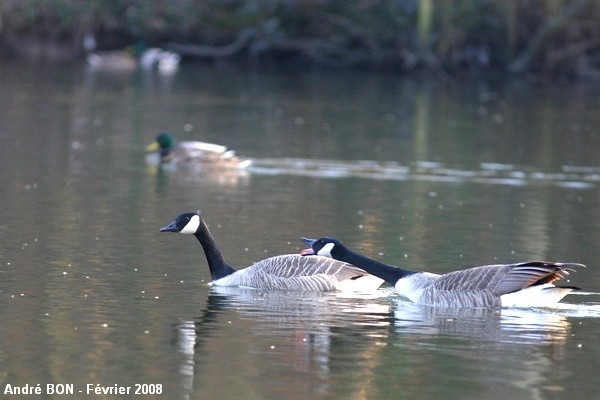
|
Is this a nuptial display? |
| [To know more about the Canada Goose] [Next picture] [Previous picture] [Top] |
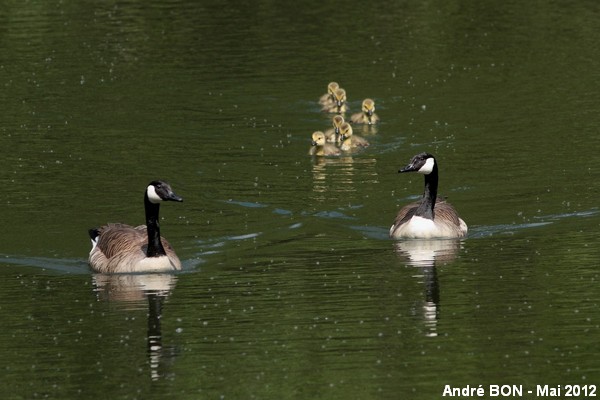
|
Here is one pair with their brood on another pond. |
| [To know more about the Canada Goose] [Next picture] [Previous picture] [Top] |
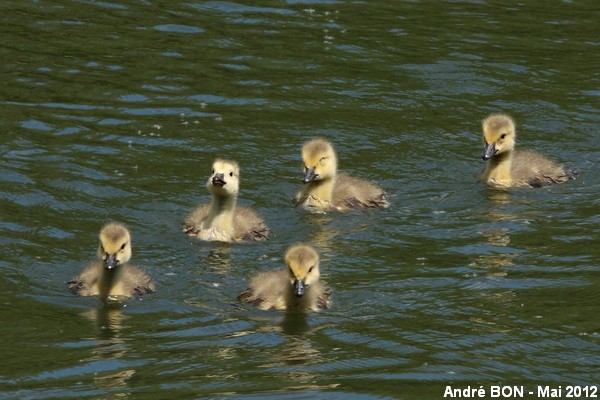
|
I have counted 6 goslings. One of them stayed away from the group photo. |
| [To know more about the Canada Goose] [Next picture] [Previous picture] [Top] |
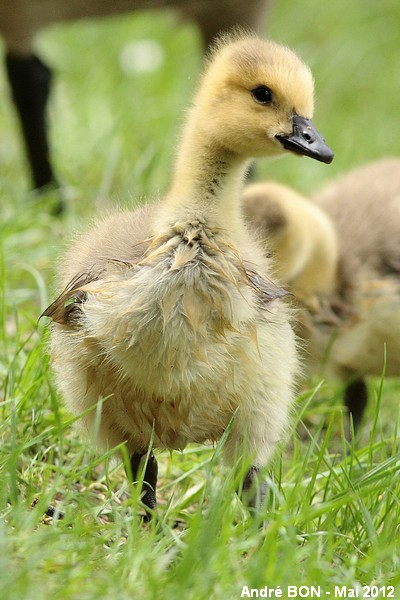
|
The parents took them to the bank to taste the grass. |
| [To know more about the Canada Goose] [Previous picture] [Top] |
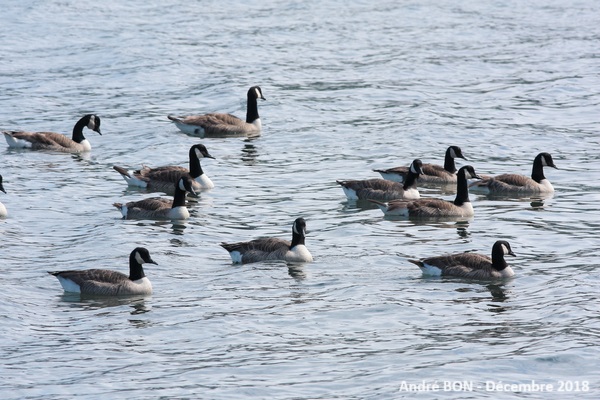
|
A trip to New Zealand is an opportunity to observe species endemic to the other side of the world. However, here, the name of the species is enough to indicate that we are in the presence of an introduced species. |